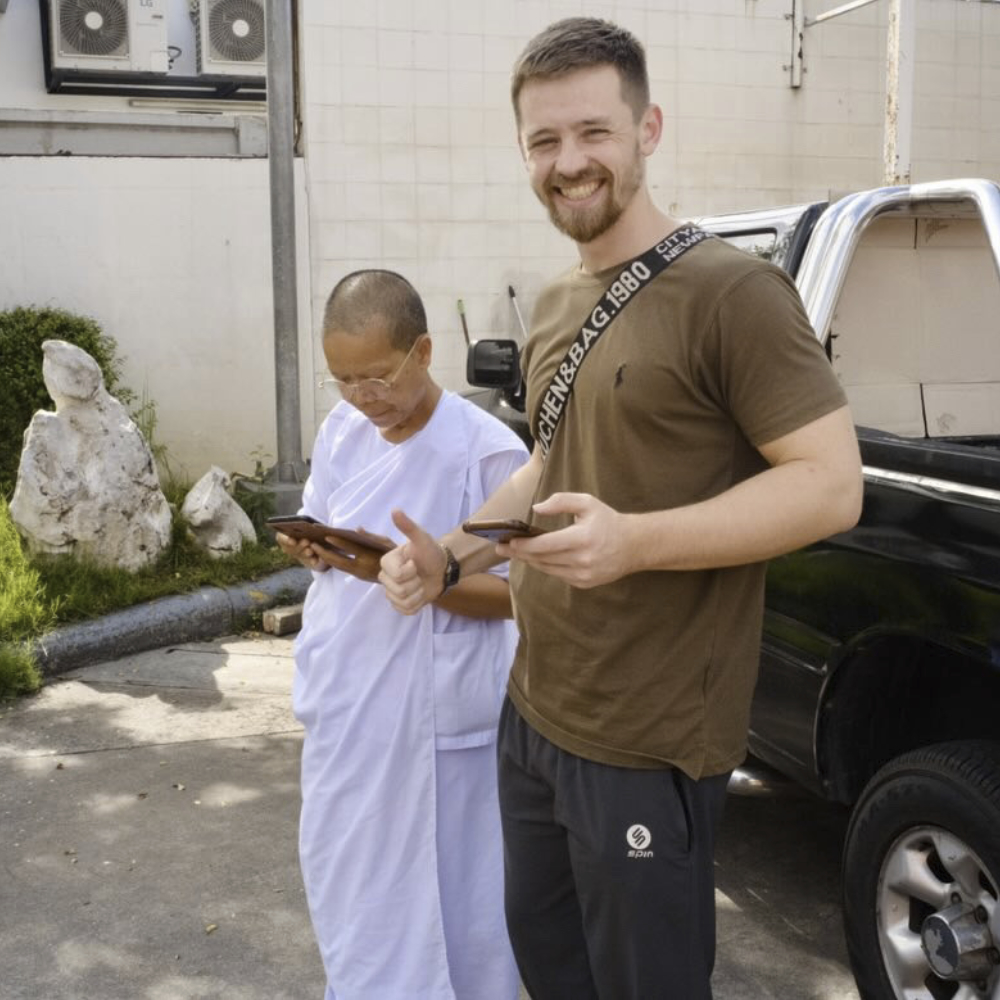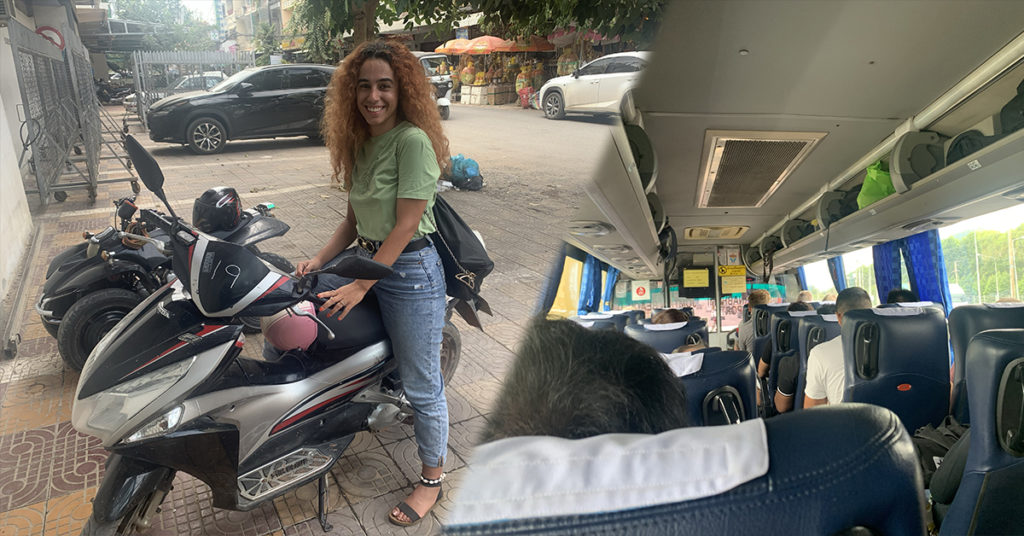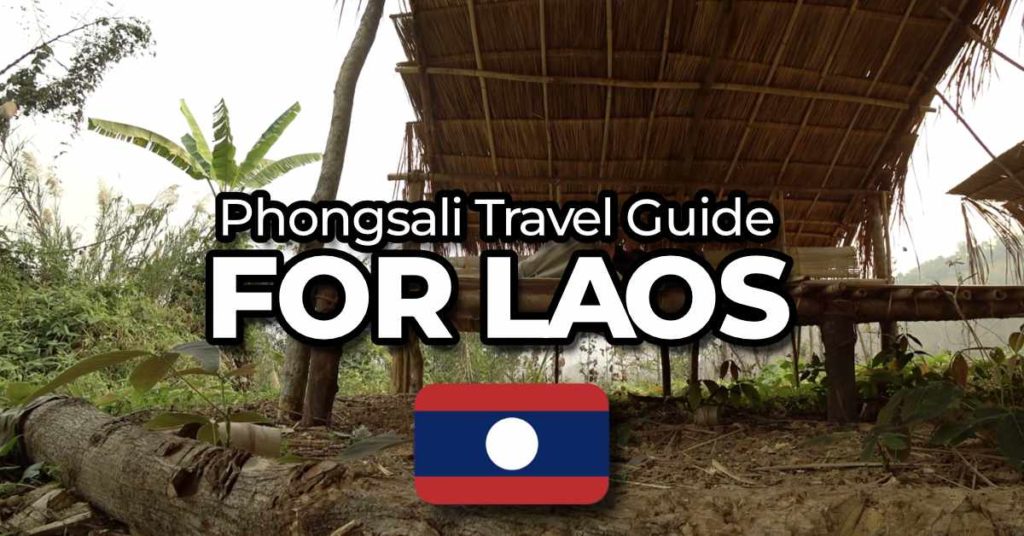Exploring the Philippines is an adventure that promises a mix of natural wonders, rich culture, and warm hospitality. But ATMs can prove an issue for some. As a traveller, one of the most crucial aspects of your journey is understanding how to access your funds seamlessly. So, in this guide, we’re going to show you everything you need to know about using ATMs in the Philippines, ensuring a hassle-free experience when it comes to withdrawing cash, and include some tips that will save you money, and you’d only know if you’d have been to the Philippines.
Quick tip: do not accept the dynamic currency conversion. Let your bank do it, you get a much better rate. Mine jumped from 67-70 PHP/GBP to 74 PHP/GBP when I let my bank do it.

Using Foreign Cards at ATMs in the Philippines
All major banks and ATM networks in the Philippines accept a wide range of foreign cards, including Visa, Mastercard, American Express, and more. However, different ATM companies may offer better rates/fees/withdrawal limits. Additionally, the withdrawal limit on your cards will vary too, so it always wise to notify your bank before your trip to avoid any potential issues with international transactions.
I personally never had any issues with using my foreign cards in the Philippines (unlike in countries like Laos & Pakistan).
One of the best ATMs to look out for in the Philippines is HSBC bank, they offer a 50,000 withdrawal limit ($860 USD) and, in some cases, don’t charge a fee at all for foreign cards, if you have a HSBC card. Unfortunately, because they are a foreign bank, there are less of them located around the Philippines. You’ll be able to find them in tourist hotspots like Manila, but anywhere else is more difficult.
(there are even 0 HSBC ATMs in Subic Bay!)
In the case of not being able to find a HSBC bank, you’ll want to look for BDO ATMs. They have a much higher withdrawal limit than most, and only charge the usual 200PHP fee.


Popular ATM Networks and Fees
Different ATM networks in the Philippines offer varying withdrawal limits and fees. Here’s a breakdown of some of the most common ones you’ll encounter:
| ATM Network | Withdrawal Fee | Maximum Withdrawal Limit |
|---|---|---|
| BancNet | PHP 200 – PHP 250 | PHP 20,000 – PHP 30,000 ($344 – $516 USD) |
| BDO | PHP 200 | PHP 40,000 ($688 USD) |
| Metrobank | PHP 200 | PHP 25,000 ($430 USD) |
| BPI | PHP 200 | PHP 40,000 ($688 USD) |
| HSBC | PHP 200 | PHP 50,000 ($860 USD) |
| China Bank | PHP 200 | PHP 30,000 ($516 USD) |
| Landbank | PHP 200 | PHP 20,000 ($344 USD) |
| Maybank | PHP 200 | PHP 25,000 ($430 USD) |
| PNP | PHP 200 | PHP 15,000 ($258 USD) |
| PSBank | PHP 200 | PHP 20,000 ($344 USD) |
| RCBC | PHP 200 | PHP 30,000 ($516 USD) |
| Security Bank | PHP 200 | PHP 40,000 ($688 USD) |
| UCPB | PHP 200 | PHP 25,000 ($430 USD) |
| UnionBank | PHP 200 | PHP 30,000 ($516 USD) |
As you can see, withdrawal fees typically range from PHP 200 to PHP 250 (approximately $4 to $5 USD), while maximum withdrawal limits can vary from PHP 20,000 to PHP 40,000 (around $400 to $800 USD).
It’s much better to withdraw larger amounts to minimize fees but just beware of carrying that much cash around with you at one time. You’ll want to distribute it to different bags and different places, so if one thing goes missing or gets lost, you don’t lose your entire worth.
Additionally, if you have a friend in the Philippines that you completely trust, you could send them money to their bank account, and they could withdraw for you without any fees. But, please, please, please be careful with this option.
Finding ATMs in the Philippines
ATMs are readily available in major cities, tourist hotspots, and shopping malls throughout the Philippines. However, their availability may be limited in remote or rural areas.
Here’s how you can locate ATMs in the Philippine:
- Major banks like BDO, Metrobank, and BPI have extensive ATM networks in urban centres.
- Look for ATMs inside malls, hotels, and airports.
- Check ATMs for security measures. For instance – is there a security guard outside? If there is, these are better to use for safety.
- If you’re exploring off-the-beaten-path destinations, carry enough cash to avoid potential shortages.
Alternative Options for Accessing Cash
While ATMs are the most convenient option for withdrawing cash, there are alternative methods you can consider:
Money Changers and Foreign Exchange Counters
Money changers and foreign exchange counters are readily available in major cities and tourist areas. These establishments offer competitive exchange rates and can be a viable option for exchanging your U.S. dollars for Philippine pesos. However, be cautious and only deal with reputable businesses to avoid potential scams.
Using Credit and Debit Cards in the Philippines
Major credit and debit cards (Visa, Mastercard, American Express) are widely accepted at larger establishments, hotels, restaurants, and shopping malls in urban areas of the Philippines. However, cash is still the preferred mode of payment in many smaller businesses and rural areas.
When using your credit or debit card, always opt to pay in Philippine pesos to avoid dynamic currency conversion fees, which can result in unfavorable exchange rates.
Opening a Local Bank Account
If you plan to stay in the Philippines for an extended period, such as for work or study, opening a local bank account can be a convenient option. Most major banks in the Philippines allow foreigners to open accounts, provided they meet the necessary requirements, which typically include a valid visa and proof of residence.
Having a local bank account can make it easier to manage your finances, receive payments (if applicable), and avoid excessive ATM withdrawal fees. However, the process of opening an account can be time-consuming and may require additional documentation.
Safety Considerations
While the Philippines is generally a safe destination, if you’re carrying a lot of cash around with you, you should probably be a little careful.
So, here are some tips to help ensure your safety while travelling with a lot of cash in the Philippines:
- Avoid carrying excessive amounts of cash, especially in crowded areas or at night.
- Distribute your money around different locations in your baggage, so if you lose one item you don’t lose all your cash
- A good idea is to store money in a zip lock bag, inside an opaque water bottle and fill it with water (likelihood of someone checking there is minimal)
- Use anti-theft bags or put your money in discreet areas. I don’t recommend money belts, because robbers target foreigners who have these.
To Exchange Money Before, At The Airport or Just Withdraw?
There are 3 ways you can exchange money in Philippines:
- FOREX Shop (cheapest – find pretty much anywhere in a tourist district, mall etc.)
- Airport (less expensive than ATM, but still pricey compared to outside)
- ATM (high fee charges but convenient – can find almost anywhere)
- GCash (have to set up an account but can use the cash-out option at stores accepting it, to withdraw fee-free!)
If you’re coming from your home country, it’s best to take your home currency/USD with you and change it when you are in Philippines. The FOREX shops here will offer far better rates than any ATM, or exchange you’ll find in your home country.
I just used the ATMs while I was here, which was a pretty bad idea considering how much the fees mounted up. $4-5 each withdrawal adds up, and the ATM exchange rates aren’t exactly good here!
If you need money in the airport (to purchase a Philippine SIM card or something similar), it’s best to convert your money at the airport exchange, because they end up being cheaper due to the lower fees. Just double check your bank’s conversion rates and the exchange rates before you decide to do this, because sometimes your bank is offering a better rate, if you don’t check dynamic conversion when withdrawing money (explained at the top of this article).
Most exchanges in the Philippines will accept all major currencies including:
- USD
- GBP
- EUR
- AUD
- JPY
- CHY
- CHF
- SGD
- HKD
- INR
- DKK
- NOK
- SEK
- TWD
- KRW
- MYR
- PHP
- NZD
- ZAR
- VND
- CAD
- IDR
- SAR
- AED
- OMR
- RUB
Tips for Minimizing ATM Fees
To avoid ATM fees, if you’re American you can just get a Charles Schwab card and they’ll refund all of your withdrawal fees from around the world. If however you’re a different nationality, you can utilise GCash in the Philippines. It asks for an address, just use the hotel one – they commonly don’t check. This will allow you to pay and withdraw, fee-free.
For GCash, you send the money to your GCash account, and you’re able to cash out in PHP in-stores that have the option to. You’ll commonly find the GCash, cash-out option in stores such as:
- Convenience Stores
- Pawnshop
- Supermarket
- Payment Facilities
- Department Stores
Important to note: you will need a passport, and phone number in order to utilise the GCash cash-out option.
Additionally, there are other travel-friendly cards available, such as Halifax Clarity, and Metro Bank cards which will help avoid the ATM fees (these are UK-based cards).
If you know any other cards that are fee-free, in your country, please comment below and we’ll update the article to make it the most helpful resource.
Unfortunately Revolut & Wise cards, still have a withdrawal fee at ATMs in the Philippines. However, they are useful if you’re going to be staying in Manila and paying for everything by card, as the conversion rates are fantastic.

Go To A Foreign Exchange Shop
Foreign exchange shops in the Philippines offer the best rates anywhere. You should take your home currency with you in cash, and use this to exchange money. The rates are very competitive and much better than you will find in any ATM or your home country’s FOREX shops.
You will find FOREX shops in major tourist areas, but shop around if you want better rates as they’re always competing! You will find slightly better rates between shops, and it can make a big bit of difference if you’re travelling on a budget.
Get A Philippines Bank Account
If you are an expat here, or you’re on a student visa, you can get a Philippine bank account. All you need to do is prove residency in the Philippines. If you can do this, any bank will allow you to open an account.
However, if you open an account here, it’s wise to transfer money from your home account when you want to withdraw cash and keep your savings in an account in your home country (in case of government collapse or something that might cause your funds to be lost – it happens)! If you want to reduce the fees of these transactions use a service like Western Union, Wise or Payoneer. Payoneer offers the best rates for sending money internationally.
I commonly use Payoneer to send money to the writers who do work on here periodically.

Avoid The Dynamic Currency Conversion
Most ATMs will ask if you want to pay in PHP or your home currency. By doing this, they sneak in a couple of extra fees that you’ll pay on top and give you a lower rate. You want to make sure that you select PHP to pay, and this will give you the cheapest conversion.
This is also the same in shops that take card payments. In some of the malls and more modern areas, you will be able to pay by card. If you are asked to convert to your home currency select no, and pay in THB instead.
Transfer Money To A TRUSTED Friend
Filipino people do not pay fees to withdraw from ATMs. If you have a friend you can trust with your life here, you can send an international transfer using a payment service like Payoneer, and reduce fees considerably. They can then withdraw up to 50,000 PHP for you from any bank. This will reduce the ATM fee entirely, and you can get a large sum out that can last you a very long time in the Philippines.
Please be careful doing this. Make sure you know the person fully and trust them completely. You have been warned!
What If My Card Doesn’t Work in The ATM & I Can’t Withdraw Money?
If your card doesn’t work in the ATM and you have no cash to go to a Foreign Exchange shop, then you can use Western Union to transfer your money from your home bank account. There are many Western Union shops located around Thailand that you can use to do this. All you need is your passport to collect the money and the code that they will send you.
Transfers are very fast and typically take minutes, but can take up to 2-5 days if something goes wrong or your transaction needs approval.
I had to do this when in Pakistan as their ATMs do not accept most foreign cards. Do your research before travelling to see if your card is accepted by Thai ATMs.
Do I Need Cash or Can I Get By With Just Card Payments?
In Thailand most places only accept cash, so you will need to withdraw from an ATM or exchange money at a Foreign Exchange. In some places like malls, or modern restaurants, and more fancy areas, they will accept cards, however, this is uncommon throughout most of Thailand.
If you have access to a Thai bank, you can use the QR code payment system in Thailand to send money.
How Can I Be Safe With All That Cash on Me?
Use common sense, and be aware. Thailand is very safe, but robbery does happen here. Don’t take your entire amount of THB out with you when you are walking the streets. If you can, it’s best to store the rest in a safe back at your hotel, but sometimes these aren’t secure enough. In this case, use a decoy wallet with some old credit cards, bank cards that have no money in them, some official-looking ID, and some cash (enough to deter a robber and think they’ve got to the main stash).
After this, store the remainder of your money in different parts of your bag. One of the least conspicuous things you can do to store money is to get a waterproof zip-lock bag, put your money inside, put it in a non-see-through water bottle, and then fill up the water.
Exploring Beyond the Major Cities
While ATMs are readily available in urban centers and tourist hotspots, accessing cash can become more challenging when venturing into remote or rural areas of the Philippines. I’ve left some tips below for you to check out.
Provincial and Rural Areas
In smaller towns and villages, ATM availability may be limited or non-existent. You’ll also only have the pleasure of being able to choose maybe 1 or 2 brands (if you’re lucky). To avoid getting yourself in a difficult situation, you should withdraw sufficient funds before leaving major cities or tourist destinations.
Something to mention as well is, rural ATMs aren’t always as stocked up as the ones in main centres. So, you may not actually be able to withdraw the amount you want from those ATMs. You might also encounter more ATMs that don’t function, so just beware of that before arriving.
The best thing you can do in these situations is:
- Check with your accommodation or local contacts before arriving, or upon arrival to get recommendations on where to find ATMs or money changers in the area.
- Check on google maps to see which ATMs are available where you’re staying.
- Carry enough cash to fund your trip here, but please be careful with your bags and where you store it.
Island Hopping and Remote Destinations



The Philippines is a country with over 7,000 islands, many of which offer breathtaking natural beauty and unique cultural experiences. However, accessing cash can be a challenge in these remote destinations. For instance, when I travelled to Romblon Island – the only ATM on the Island would commonly run out of money, and you’d have to wait until the delivery each day.
If you are travelling to a more remote area, make sure you take enough with you, and use the ATM as a last resort. You won’t find many ATMs dotted around rural Islands. In the more touristic hotspots there are more available, so you can worry less, if you’re going to them.

I’m Harry – and I was tired of the same old “10 best places I’ve never been but I’m writing about for some reason” blog posts. So… I’m a young traveller on a mission to travel the world and share my true, unfiltered experience, including all the gristly details. From packing my life into one bag for a year, to traveling Vietnam by motorbike, to sorting out Visas for specific countries – I’ve done it all, am doing it all and only give my advice on things I have done – not regurgitated cr*p from another source *cough* most publications *cough*. So bear with us! This project will take some time to grow, and will take a fair bit of money. But I’m determined to make it the single best source of information about traveling on the internet.


